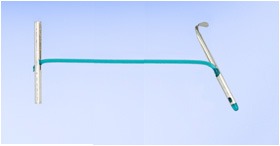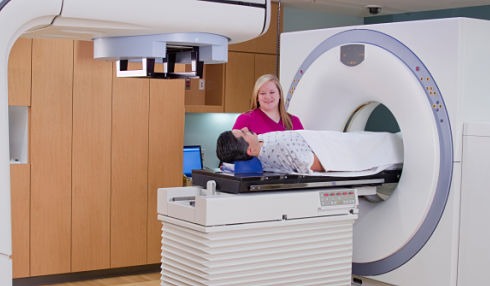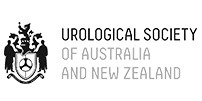Dealing with BPH (Benign Prostatic Hyperplasia) can be extremely challenging, especially over time and the symptoms take hold. Seeking treatment is crucial to overcoming symptoms quickly and avoiding other potential conditions, such as urinary urgency and sexual dysfunction.
If you are suffering from BPH and are confused between primary treatments UroLift or TURP, our article provides helpful information to help decide the best BPH treatment for you.
What is BPH?
Benign Prostate Hyperplasia – BHP for short – is a term for an enlarged prostate. It is a prevalent issue among men that comes with age, usually causing urinary urgency problems that impact the quality of life.
BHP is non-cancerous and does not progress automatically to prostate cancer. If left untreated, the condition can lead to other health problems, such as kidney infections or bladder stones.
Is surgery the only option for treating BPH?
While there are medicines available to treat the symptoms of BPH, they won’t cure the condition altogether – and they come with side effects.
Most prescription drugs to treat BPH contain testosterone-modifying drugs like Dutasteride and alpha-blockers. Some men complain of a loss of libido when taking Dutasteride medication. In addition, the alpha-blockers can cause nasal congestion, postural hypotension (low blood pressure when standing up), giddiness and retrograde ejaculation (dry orgasm).
Two BPH surgical treatments are available – Transurethral Resection of the Prostate (TURP) and UroLift. TURP has been around for almost 100 years, while UroLift is a twenty-first-century addition to the field of urology treatments.
Let’s take a closer look at each one.
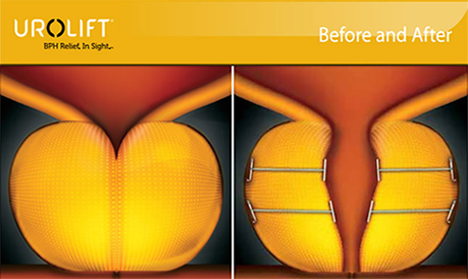
UroLift
UroLift was introduced to Australia in 2010 and has become popular BPH treatment due to its limited invasive nature and low rate of side effects.
The UroLift insertion procedure involves a day in hospital, a general anaesthetic and a telescope inserted into the penis up to the prostate gland. A number of small staples are deployed to pull the prostate lobes apart and encourage greater urine flow.
This procedure does not cause retrograde ejaculation, which is when the semen usually omitted at the point of orgasm goes back into the bladder (also known as dry orgasm). Therefore, with no impact on the fertility process, it is suitable for men who want to father children,
UroLift is not as effective as TURP for relieving bladder neck obstructive symptoms, although it provides a good temporary measure for men who wish to retain their fertility.
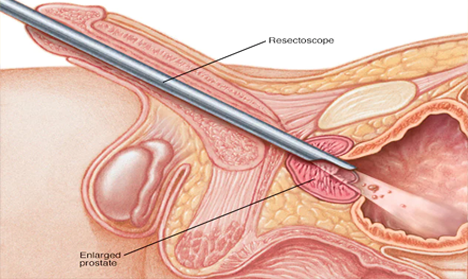
Transurethral Resection of the Prostate (TURP)
TURP is the gold standard surgical intervention for prosthetic bladder neck obstruction causing lower urinary tract symptoms like BPH.
The procedure involves a general anaesthetic and a hospital stay. The obstructing centrally-placed prostatic tissue is endoscopically respected and a channel is created to promote a good strong urine flow to help empty the bladder completely when urinating.
Currently, TURP is the most effective method for treating BPH, with most patients left feeling as they did during their younger years. When the operation is performed well, the recurrence rate is only 10% over a 10-year period.
Equally crucial for some patients is that TURP surgery does not interfere with erectile function. However, unlike UroLift, it can cause retrograde ejaculation and therefore is unsuitable for men considering fathering children.
Which BPH Treatment is Best –TURP or UroLift?
Even though the urinary function improves after both BPH treatments, the degree of improvement varies.
After UroLift for BPH, the urinary function is improved by 30%, resulting in less frequent urination.
Contrarily, the TURP procedure improves urinary flow by up to 90%.
As mentioned already, the procedures should only be considered alongside potential side effects and their impact on the health and long-term plans of the patient.
How Long is Recovery from UroLift and TURP?
Urolift recovery
After UroLift surgery, recovery is considered quick. The patient may experience urine frequency and urgency for a short period and blood in the urine. Generally, though, no pain is associated with the surgery and quality of life improves quickly.
TURP recovery
Like with UroLift, you won’t experience any pain after TURP surgery. Any irritating symptoms such as urine frequency, urgency and getting up at night to use the bathroom typically improve over six weeks.
For both procedures, return to work is usually permitted within seven days.
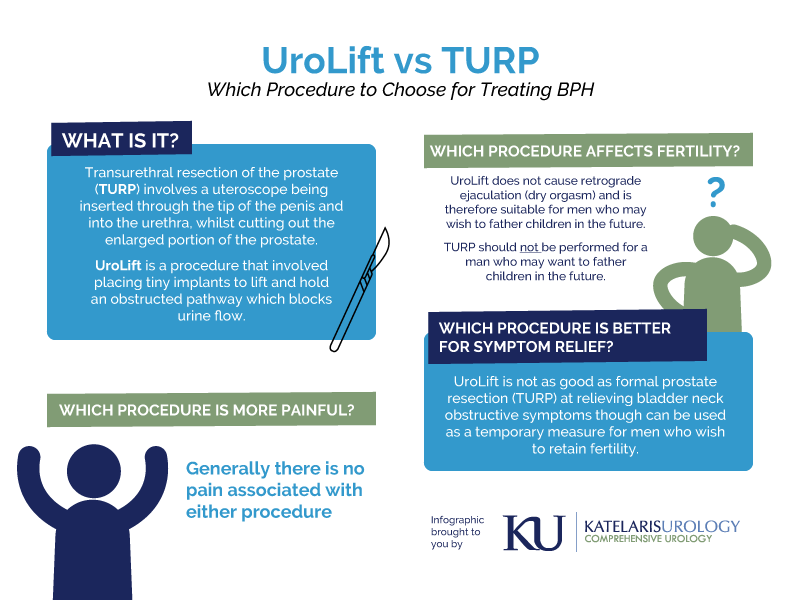
Katelaris Urology is a leading practise based in Sydney, Australia.
If you want to discuss treatment for BPH, contact us online today or call our team on (02) 9477 7904
